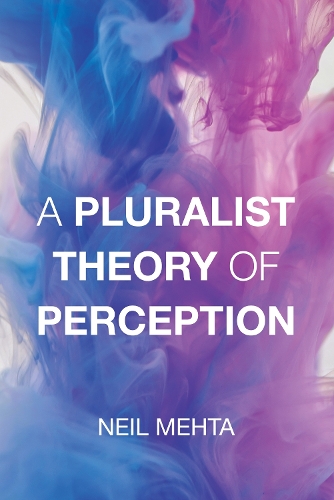
A Pluralist Theory of Perception
(Paperback)
Publishing Details
A Pluralist Theory of Perception
By (Author) Neil Mehta
MIT Press Ltd
MIT Press
10th September 2024
United States
Classifications
General
Non Fiction
121.34
Physical Properties
Paperback
358
Width 152mm, Height 229mm
Description
Most contemporary theories of perception, including leading forms of representationalism and naive realism, are monistic- they assume that to consciously perceive is to deploy only one kind of sensory awareness. In A Pluralist Theory of Perception, Neil Mehta instead argues for pluralism, which says that to consciously perceive is to deploy two very different kinds of sensory awareness in concert. Mehta argues that pluralism can simultaneously explain what is common to all forms of consciousness and what is distinctive about conscious perception. Mehta's preferred version of pluralism, which he calls rich pluralism, says that conscious perception is constituted by successful sensory representation and deep awareness. Successful sensory representation is a representational form of awareness whose targets include particulars. It is found in perceptions, whether conscious or unconscious, but not in hallucinations. By contrast, deep awareness is a nonrepresentational form of sensory awareness whose targets are certain universals-the sensory qualities. Deep awareness constitutes one kind of consciousness, it is common to conscious perceptions and hallucinations, and it reveals part of the essences of its targets. Mehta argues that although rich pluralism appears to be less parsimonious than monism, it is not. All monistic theories that are explanatorily adequate end up being even more complex than rich pluralism. Thus, rich pluralism is the most spartan theory that can shoulder the explanatory load. A new theory of perception that posits that conscious perception consists not of a single kind of awareness, but of two radically different kinds deployed in concert. Most contemporary theories of perception, including leading forms of representationalism and naive realism, are monistic- they assume that to consciously perceive is to deploy only one kind of sensory awareness. In A Pluralist Theory of Perception, Neil Mehta instead argues for pluralism, which says that to consciously perceive is to deploy two very different kinds of sensory awareness in concert. Mehta argues that pluralism can simultaneously explain what is common to all forms of consciousness and what is distinctive about conscious perception. Mehta's preferred version of pluralism, which he calls rich pluralism, says that conscious perception is constituted by successful sensory representation and deep awareness. Successful sensory representation is a representational form of awareness whose targets include particulars. It is found in perceptions, whether conscious or unconscious, but not in hallucinations. By contrast, deep awareness is a nonrepresentational form of sensory awareness whose targets are certain universals-the sensory qualities. Deep awareness constitutes one kind of consciousness, it is common to conscious perceptions and hallucinations, and it reveals part of the essences of its targets. Mehta argues that although rich pluralism appears to be less parsimonious than monism, it is not. All monistic theories that are explanatorily adequate end up being even more complex than rich pluralism. Thus, rich pluralism is the most spartan theory that can shoulder the explanatory load.
Author Bio
Neil Mehta is Associate Professor of Philosophy at Yale-NUS College.
